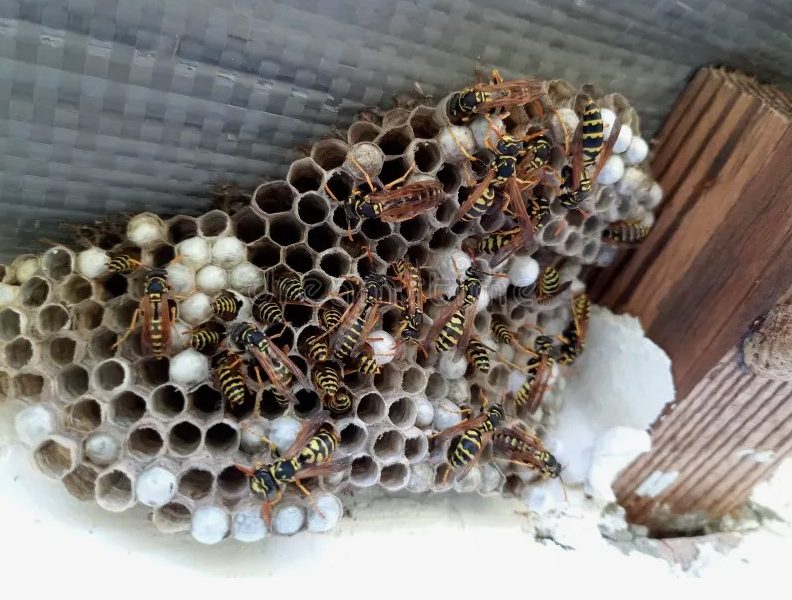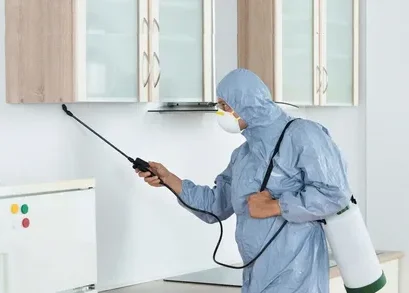Carpenter bees may be crucial pollinators, but their nesting habits can wreak havoc on wooden structures. Unlike termites, carpenter bees don’t eat wood, but they bore into it to create tunnels for nesting, which can lead to significant damage if left unchecked. Managing carpenter bees effectively involves understanding their behavior, implementing preventative measures, and adopting appropriate control methods. This article will explore practical steps to handle carpenter bees and protect your wooden structures, including insights on repair and maintenance that preserve the structural integrity of your property.
Understanding Carpenter Bees
Carpenter bees are large, solitary bees that typically nest in exposed wood. They resemble bumblebees but can be distinguished by their smooth, shiny abdomen. Male carpenter bees, which are territorial and often aggressive, don’t sting, whereas females, though generally non-aggressive, do possess a sting they rarely use.
These bees typically burrow into wood by creating circular holes about half an inch in diameter. Within, they construct a series of tunnels where they lay eggs and store food for their larvae. The resulting network of tunnels can weaken wooden beams, siding, and other exposed wooden surfaces over time. To manage carpenter bees effectively, it’s essential to understand both their nesting habits and what attracts them to your home.
Signs of Carpenter Bee Activity
Spotting the initial signs of carpenter bee activity can help you mitigate damage early. Look for small, round holes in wooden structures, often accompanied by sawdust piles or a yellowish stain from the bee’s waste. You may also notice male carpenter bees hovering near the nesting sites, especially during the spring and early summer when they are most active. Observing these signs early allows you to take swift action to prevent further damage.
Preventing Carpenter Bee Infestations
One of the most effective ways to handle carpenter bees is to prevent infestations in the first place. These proactive measures can help keep carpenter bees from seeing your home as an inviting place to nest:
- Paint and Stain Exposed Wood: Carpenter bees are less attracted to painted or varnished wood. Applying a layer of paint or stain can deter them from boring into the surface, especially for outdoor wood structures like decks, fences, and eaves.
- Use Hardwood: Carpenter bees prefer softwoods like pine, cedar, and redwood. Using hardwood for construction or decorative elements can make these areas less appealing.
- Seal Holes and Cracks: Regularly inspect your property for cracks or existing boreholes in wood. Filling these gaps with wood putty or caulk can prevent carpenter bees from returning or expanding tunnels.
- Cover Exposed Wood: For critical structures, consider installing protective materials like vinyl or aluminum siding to shield the wood from carpenter bee activity.
Natural and Non-Toxic Methods for Carpenter Bee Control
For homeowners looking for eco-friendly solutions, several natural methods can help deter carpenter bees without harming beneficial insects or the environment. Some popular non-toxic solutions include:
- Citrus Oil Spray: Carpenter bees are repelled by citrus oil, which can be made by boiling citrus peels and spraying the solution around nesting areas. Apply this spray in the early morning or late evening for the best effect.
- Essential Oils: Oils like tea tree, lavender, and almond oil are natural deterrents. Mixing these oils with water and applying them to carpenter bee entry points can encourage the bees to leave.
- Noise Deterrents: Carpenter bees are sensitive to sound. Using a portable radio set to a high volume near their nesting site can sometimes drive them away over a few days.
- Steel Wool and Wood Putty: For a more permanent fix, fill active nesting holes with steel wool to prevent the bees from digging further. Once the bees have left, seal the holes with wood putty to prevent re-entry.
Professional Solutions for Managing Carpenter Bees
In some cases, DIY solutions might not fully resolve a carpenter bee infestation, especially if there are multiple nests or extensive wood damage. For these situations, reaching out to a professional bee removal service can ensure that the problem is handled effectively and safely. Reliable Bee Removal Service providers use specialized tools and eco-friendly treatments to manage bee infestations without harming the bees or causing excessive damage to your property. These services often involve sealing entry points, applying targeted insecticides, and providing guidance on preventive maintenance to reduce future infestations.
Repairing Wood Damage
Once carpenter bees have been removed, it’s essential to repair any damage they caused to restore structural integrity. Unattended carpenter bee damage can lead to further deterioration, especially if moisture infiltrates the tunnels, creating an ideal environment for wood rot and mold growth.
- Fill and Seal Boreholes: Use wood filler to seal carpenter bee entry points, preventing water infiltration and further weakening of the wood. After applying filler, sand the area smooth and consider painting or staining it to further deter future bee activity.
- Replace Damaged Wood: In cases of extensive damage, replacing sections of the wood may be necessary. For large-scale infestations or structural elements, consult a contractor for proper repairs.
- Apply a Protective Finish: After repairs, protect vulnerable areas with paint, stain, or varnish. Regular maintenance checks can help ensure that carpenter bees don’t return and cause additional damage.
Routine Maintenance to Prevent Carpenter Bee Infestations
Preventing carpenter bee infestations is an ongoing process that includes regular inspections and maintenance. Homeowners can keep their structures bee-free and well-maintained with these simple strategies:
- Annual Inspections: Schedule annual inspections to check for signs of carpenter bees, particularly in the spring when they become active. Early intervention can prevent minor issues from escalating.
- Repair Cracks and Crevices: Check wooden structures for cracks, weathering, or natural wear and tear. Timely repairs will make it less likely for bees to nest.
- Clean and Maintain Outdoor Structures: Outdoor decks, pergolas, and fences require regular cleaning and protective treatments to withstand weathering and prevent wood-boring insect infestations.
- Use Bee Deterrents in High-Risk Areas: In locations prone to carpenter bee activity, consider applying natural deterrents periodically, especially at the start of the bee season in spring.
Protecting the Environment While Managing Bees
It’s important to remember that carpenter bees, like all pollinators, play a vital role in the ecosystem. When possible, use non-lethal methods to manage infestations. Encouraging bees to nest in other areas, such as by installing bee houses away from the structure, can provide them with a suitable alternative habitat. This practice can help reduce carpenter bee activity on your property while still supporting their beneficial impact on the environment.
Conclusion
Handling carpenter bees requires a combination of prevention, strategic deterrence, and sometimes professional intervention to protect wooden structures effectively. By understanding the habits of carpenter bees and implementing the appropriate control measures, you can minimize damage while respecting these insects’ place in nature. For persistent or severe infestations, a Reliable Bee Removal Service may offer the safest, most efficient solution, ensuring that your wooden structures remain intact and bee-free. Whether through DIY techniques, eco-friendly methods, or professional assistance, safeguarding your home from bees is achievable with a little care and diligence.













